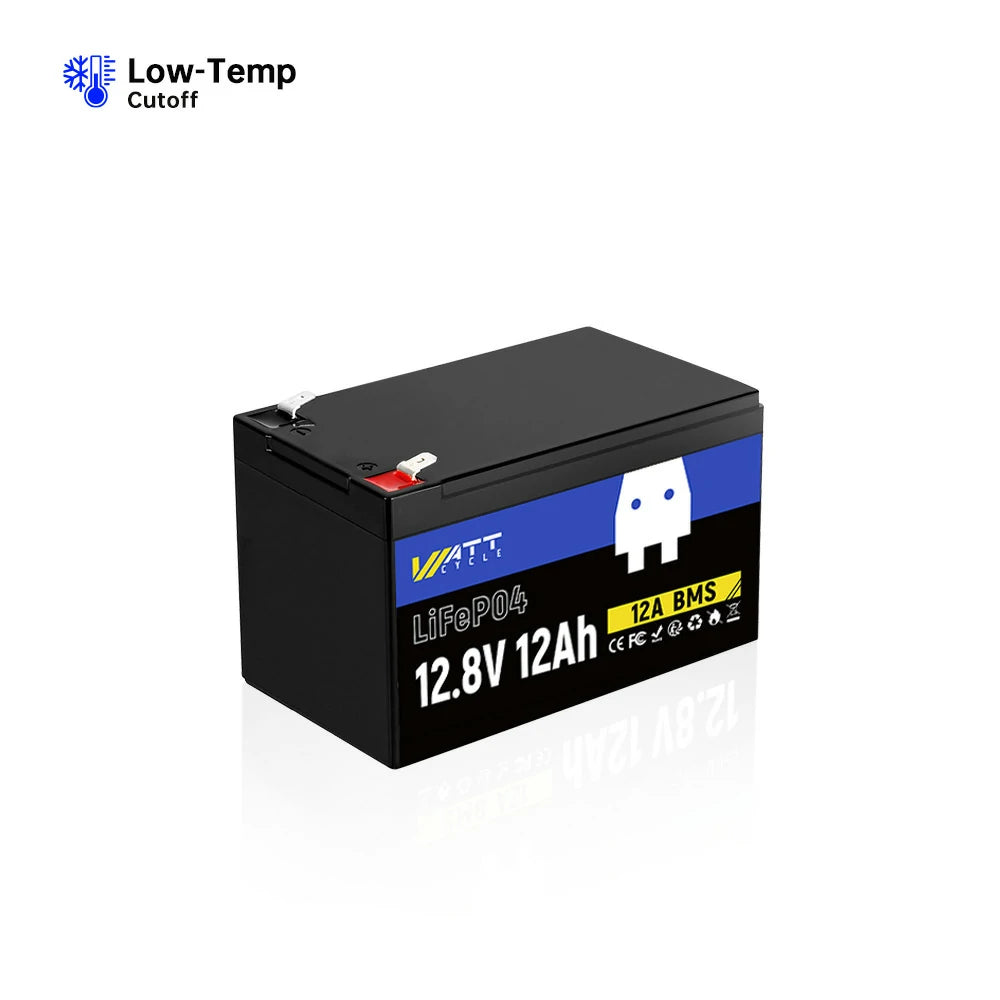

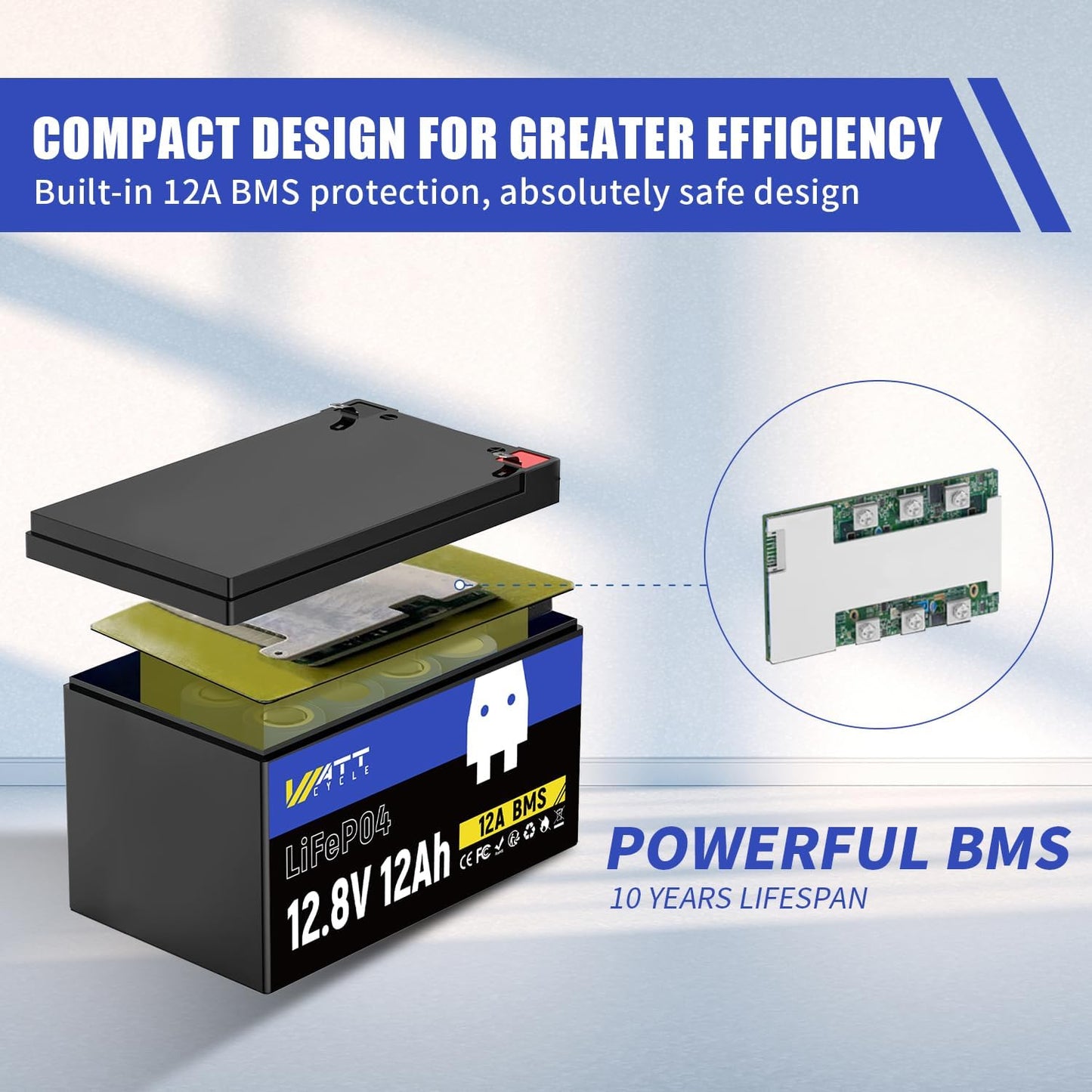
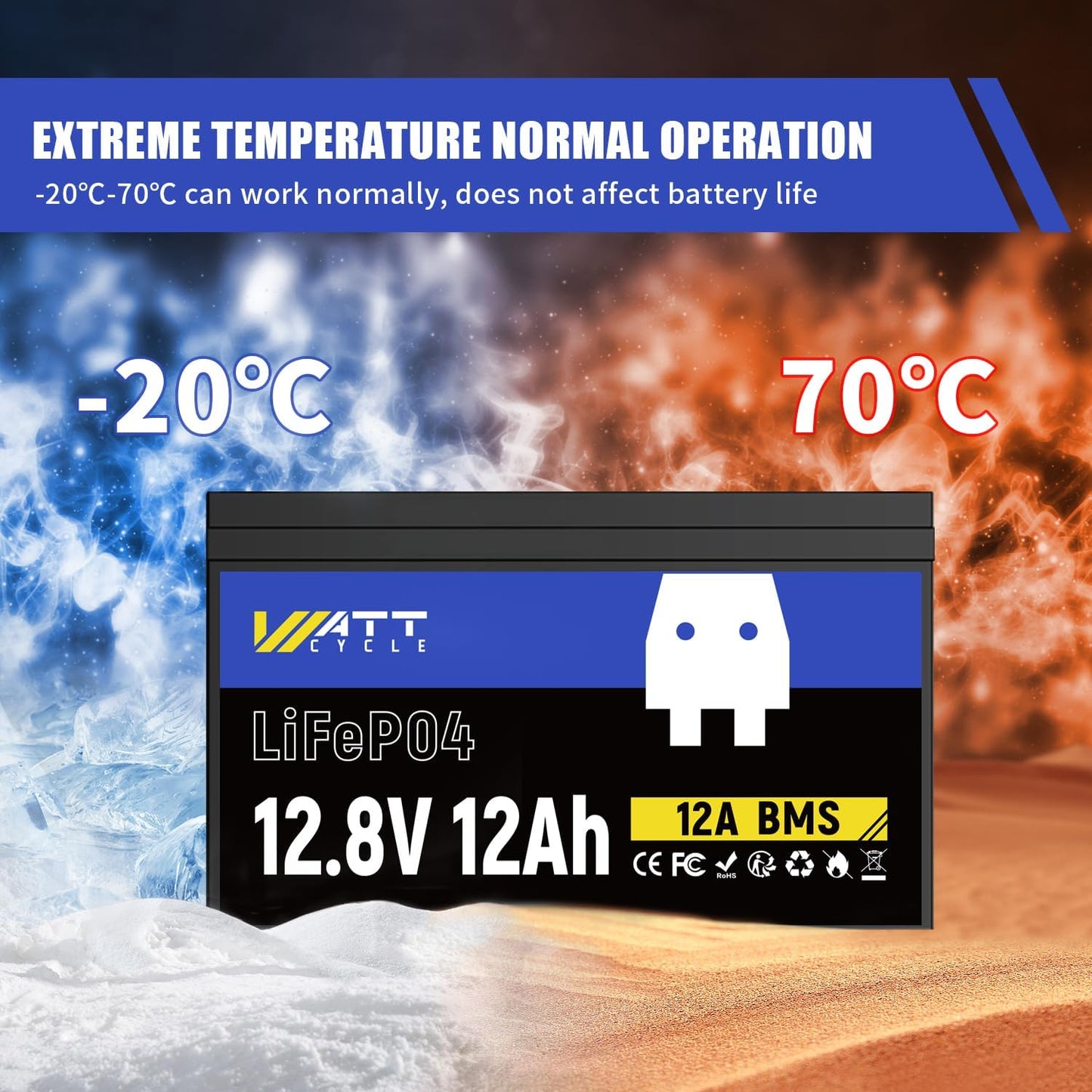
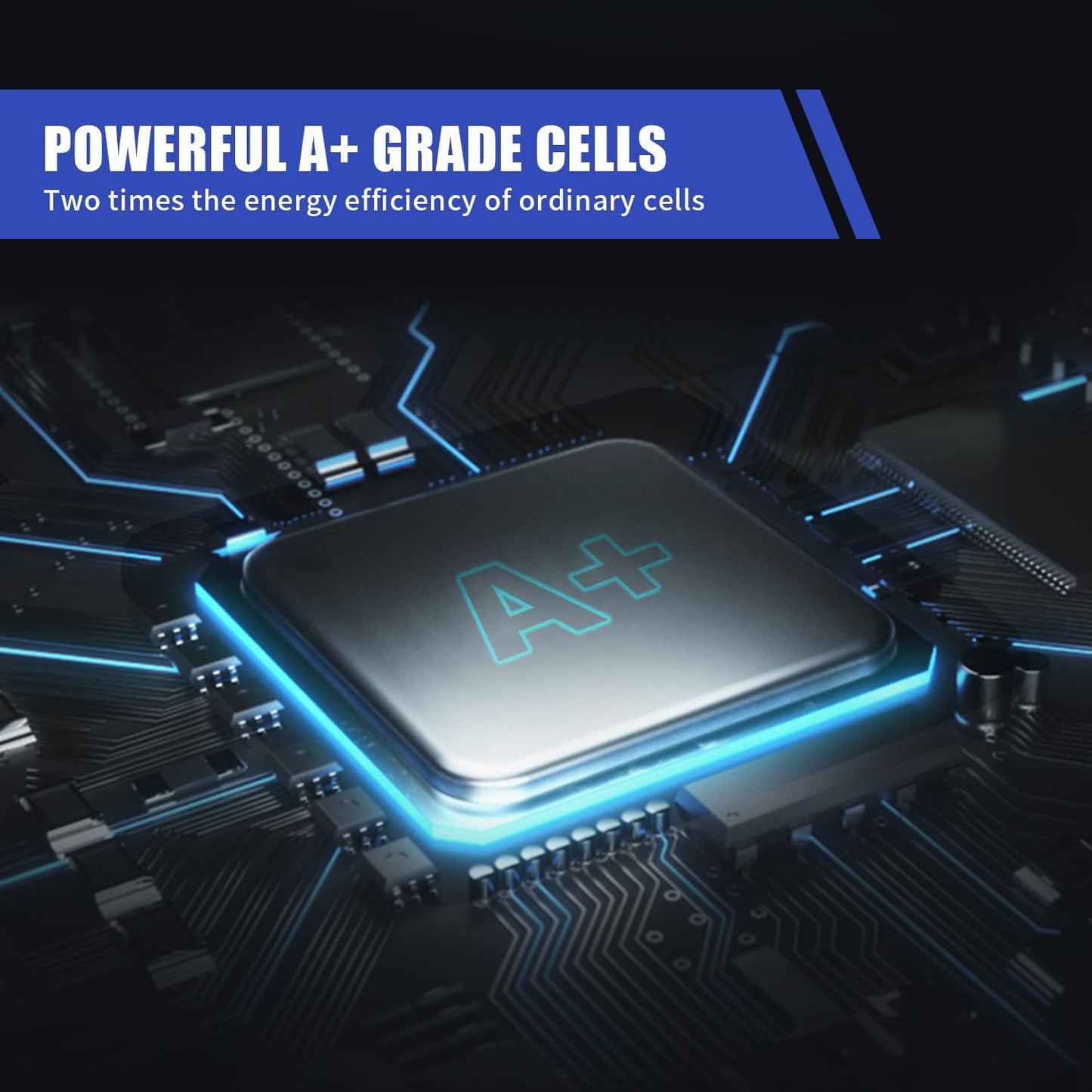

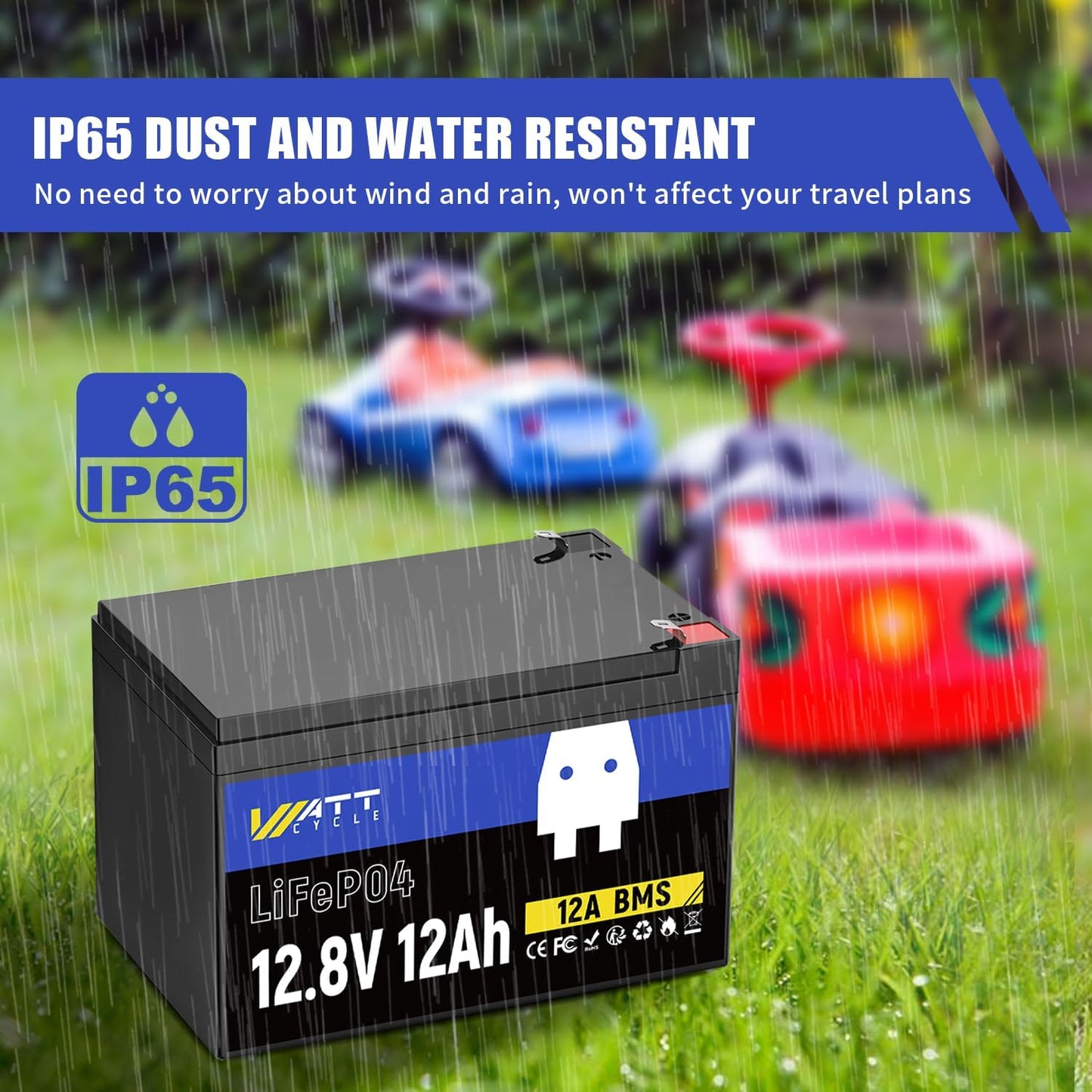
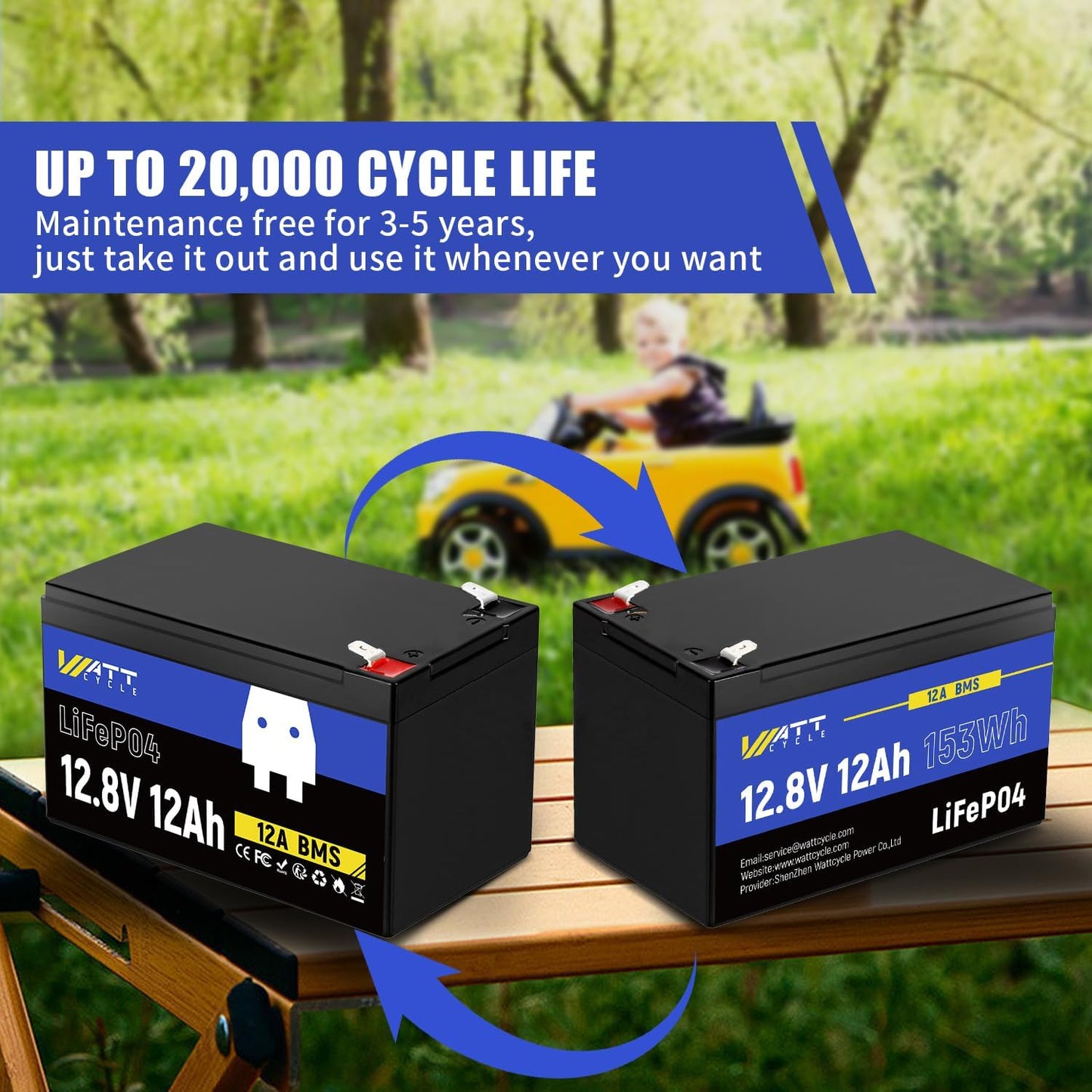
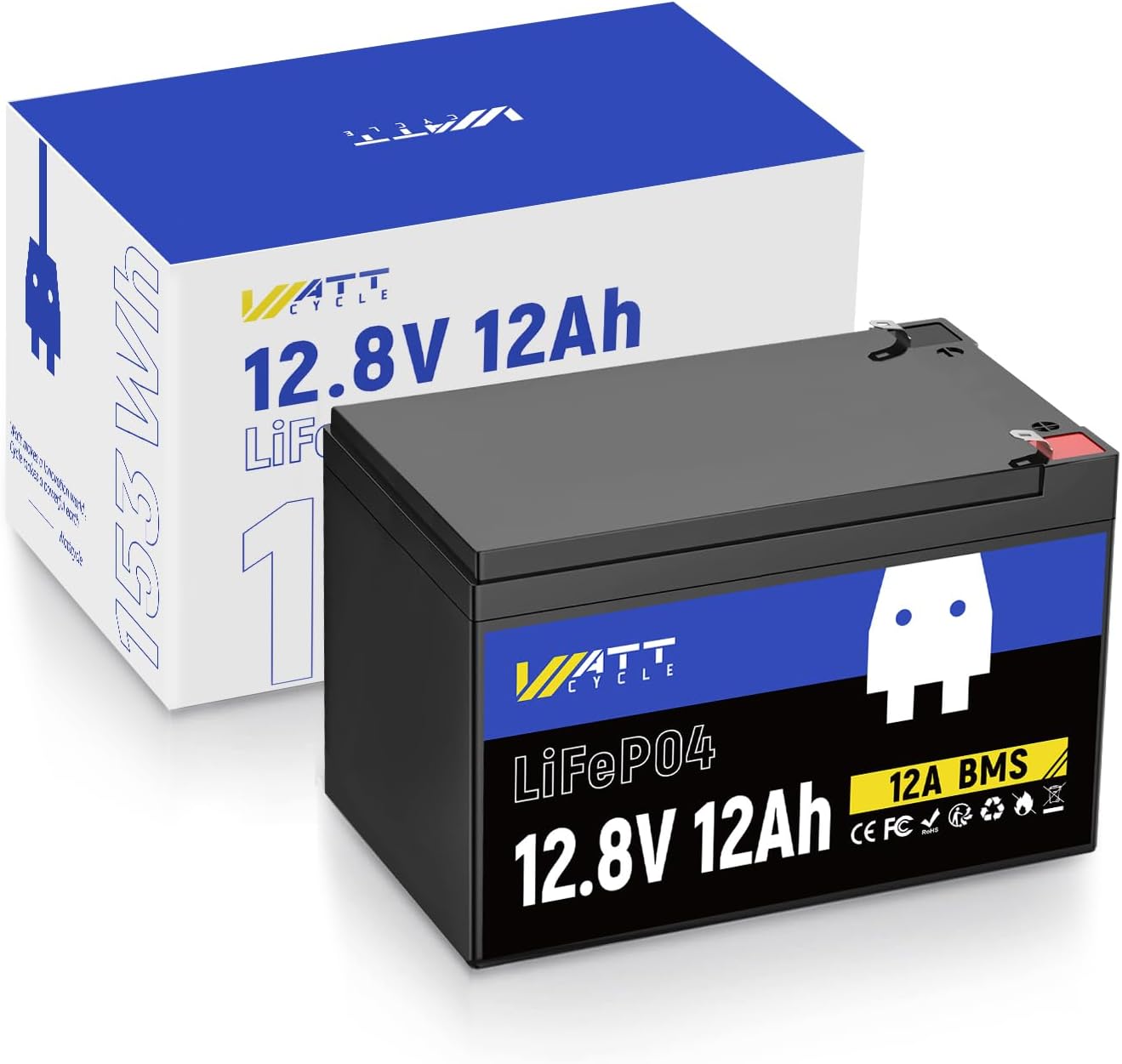
Smaller, More Portable in Daily Use
Grade A+ Cells & 12A BMS
Guarantee Your Safe LiFePO4 Adventures
Why Lithium Is A Better Choice?
Safeguard of Your House
More Applications
Tech Specs
GENERAL
| Dimensions (Inches) | 5.94 (L) x 3.89 (W) x3.93 (H) |
| Weight | 2.22lbs / 1kg |
| Waterproof Rating | IP65 |
| Warranty | 5 years |
| Housing Material | ABS (Flame Retardant Plastic) |
| Terminal | M8 bolts |
BATTERY
| Cell | EV Grade A+ LiFePO4 Cells |
| Nominal Voltage | 12.8V |
| Nominal/Usable Capability | 12Ah |
| Energy | 153.6Wh |
| Cycle Life | 5,000 cycles @100% DOD, 6,000 cycles @60% DOD, 15,000 cycles @40% DOD |
| Max Depth of Discharge (DOD) | 100% |
| Max. Expansion | 4S4P |
| Certifications | SDS/UN38.3/FCC/CE/ROHS/UL |
| Internal Resistance | ≤40mΩ |
BMS
| BMS | 12A |
| Max. Continuous Output Power | 153.6W |
| Max. Continuous Charge Current | 12A |
| Max. Continuous Discharge Current | 12A |
CHARGE
| Charge Voltage | 14.6V ± 0.2V |
| Charge Method | CC/CV |
| Recommend Charge Current | 10A |
| Charge Temperature | 0℃ to 50℃ / 32℉ to 131℉ |
| Discharge Temperature: | -20℃ to 55℃ / -4℉ to 131℉ |
| Storage Temperature | 0℃ to 55℃ / 32℉ to 131℉ |
| Low-Temperature Protection | Yes (32℉/0℃) |
| Low-Temperature Charging Protection Auto Recovery | Yes (41℉/5℃) |
Frequently Asked Questions
Q1:Can I use it under the low-temperature environment?
A1:
Yes, you can.
It is equipped with a built-in 12A Battery Management System (12A BMS) that includes low-temperature cut-off protection. This feature prevents charging or discharging when the internal temperature falls below a certain threshold, protecting the battery from damage and ensuring safe operation in cold environments.
Minimum Discharge Temperature: -4°F (-20°C)
Maximum Discharge Temperature: 158°F (70°C)
Q2:What is the maximum number of WattCycle 12V 12Ah LiFePO4 batteries connected in series or parallel?
A2:
The maximum number of the LiFePO4 battery that can be connected in series or parallel depends on various factors,
such as the specific application requirements, the capacity of the battery management system (BMS), and the limitations of the charging and discharging systems.
Generally, batteries can be connected in series to increase voltage or in parallel to increase capacity.
As for the WattCycle 12V 12Ah LiFePO4 Battery, you can connect up to four in series or/and parallel configurations (denoted as 4S or/and 4P). This allows you to increase the voltage (series) or capacity (parallel) of your battery system to meet your specific needs.
Q3: Can it charge for my mobile phone?
A3:
Yes, you can.
The battery can charge phones. In fact, most modern phones use LiFePO4 batteries as their primary power source. You can use a charger or an external power bank (such as a portable charger) to charge your phone, which are typically powered by LiFePO4 batteries as well.
Q4: Is it recommended for purchasing for my child's toy car?
A4:
Yes, it is a suitable choice for powering your child's toy car.
It offers a good balance of voltage and capacity, providing sufficient power for extended playtime.
Additionally, lithium batteries are lightweight, durable, and offer longer lifespan compared to traditional lead-acid batteries, making them a reliable option for powering toy cars.
However, please ensure compatibility with your specific toy car model and consider safety precautions while handling and charging the battery.
Q5:Can I drop it away after I use it?
A5:
LiFePO4 batteries are recyclable. Used LiFePO4 batteries can be processed through specialized recycling systems, where useful materials can be recycled and reused, reducing the need for original resources.
In order to meet the needs of environmental protection, we strongly recommend that you correctly recycle used LiFePO4 batteries.
Q6:Are there any risks of leakage from it?
A6:
LiFePO4 batteries usually do not leak during normal use and proper handling. The main reasons are as follows:
1) Closed design:LiFePO4 batteries usually adopt a closed design, and the internal chemicals are sealed in the battery casing and will not come into direct contact with the environment. This prevents harmful substances in the battery from leaking or spilling.
2) High stability: LiFePO4 batteries have good chemical stability and will not produce volatile organic compounds or harmful gases during normal use. This reduces the battery’s negative impact on the environment.
Q7:Does the battery get hot during the charging?
A7:
Yes, it will get hot during charging. This is because when charging, the current passing through the battery causes an internal chemical reaction in which some of the energy is converted into heat. This internal reaction causes the battery to generate heat, so the surface of the battery will feel warm and sometimes even become hot.
The amount of heat generated depends on a variety of factors, including the battery's charging rate, charger design, ambient temperature, and the condition of the battery (for example, whether the battery is over-discharged). Under normal use conditions, moderate heat is normal, but if the battery is abnormally hot, it may indicate a problem that requires inspection and treatment.
Q8:I usually charge my battery at night. Will charging it overnight damage the battery?
A8:
Charging it overnight will usually not damage the battery, provided you are using a suitably designed charger and the battery itself is in good condition.
At the same time, our battery is installed with 12A BMS.
BMS monitors the voltage of the battery, and once it detects that the voltage reaches the preset overcharge threshold, it will take measures to stop charging. This is usually accomplished by cutting off the charging current or sending a signal to the charger to stop charging. This prevents the battery from continuing to receive charging and causing the voltage to exceed the safe range, thereby avoiding overcharging.
However, charging for a long time may increase the temperature of the battery, which may have a certain impact on the battery life.
To maximize the life of your battery, it is recommended to follow the charging recommendations and to regularly check the status of your battery.
If you are concerned about the safety or longevity of your battery, consider using a smart charger with an auto-stop function, as well as regular battery inspection and maintenance.
Q9:Can it power kayaks?
A9:
The battery may not be enough to provide sustained power support for a large kayak. Typically, larger kayaks require larger capacity and higher wattage power sources to provide adequate power. It is recommended to select a battery with appropriate capacity and power based on the size, weight and usage needs of the kayak.
Q10:How long can it last after a full charge?
A10:
The battery capacity means it can deliver 12 ampere hours (Ah) of power under ideal conditions. The duration depends on the power requirements of the connected device. In general, the following formula can be used to estimate the battery's duration:
Duration (Hours) = Battery Capacity (Ah) / Device Power (in Watts, W)
For example, if the device has a power of 60W, then:
Duration (hours) = 12Ah / 60W = 0.2 hours = 12 minutes
This is an estimate under ideal circumstances. In actual use, the battery duration may be affected by various factors, such as temperature, usage environment, equipment efficiency, etc.
















